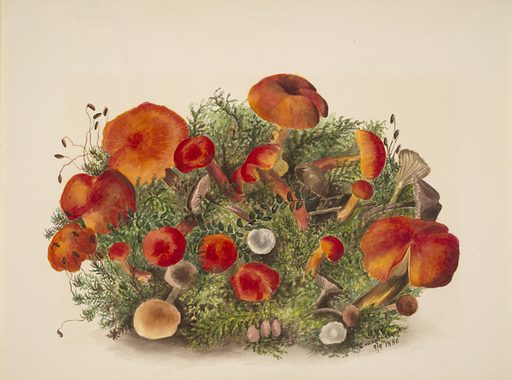Mushrooms are a captivating and enigmatic group within the world of fungi. Their mysterious growth habits, diverse forms, and culinary and medicinal uses have intrigued humans for thousands of years. This article explores the fantastic world of mushrooms, their structure, identification, and life cycle.
Understanding Mushrooms
Mushrooms are the fruiting bodies of certain types of fungi, serving as the reproductive structures that produce and release spores. While their appearance can vary significantly, most mushrooms share some basic structures:
- Cap: The cap, or pileus, is the umbrella-like structure that we usually see when we think of a mushroom. It houses the gills, pores, or teeth where spores are produced.
- Gills, Pores, or Teeth: These structures on the underside of the cap are where the mushroom’s spores are produced. Gilled mushrooms are often what people picture when they think of mushrooms, but many species have pores or teeth instead.
- Stem: Also known as the stipe, the stem supports the cap. Some mushrooms may also have a ring around the stem and a base that could be bulbous or volva-shaped.
- Spores: These are the microscopic “seeds” that mushrooms produce for reproduction. They are carried by wind or water to new locations where they can germinate and grow.
Identifying Mushrooms
Identifying mushrooms can be challenging due to their immense diversity. Here are some key characteristics to consider:
- Cap Shape and Color: The shape and color of the cap can provide essential clues. Some caps might be flat, conical, bell-shaped, or convex, and colors can range widely.
- Gills, Pores, or Teeth: The structure and color of these can be critical in identification.
- Stem Characteristics: The presence of a ring, the shape of the base, and other stem characteristics can also help identify a mushroom.
- Spore Print: Collecting a spore print, which involves letting the spores fall onto a piece of paper, can help identify the mushroom. The color of the spore print is a crucial identification feature.
Mushroom Growth Cycle
The mushroom growth cycle begins when a mature mushroom releases its spores. These spores travel until they find a suitable environment to germinate, forming hyphae. When two compatible hyphae meet, they fuse to form a mycelium, a network of fungal threads that can grow and expand underground or within rotting material.
When conditions are right, the mycelium forms a fruiting body – the mushroom we see. The mushroom matures, releases its spores, and the cycle begins anew.
Mushrooms are a vital and intriguing part of our natural world. Their unique life cycle, diverse forms, and important ecological roles underline the wonders of the fungal kingdom. So, the next time you encounter a mushroom during a woodland walk or in your backyard, take a moment to admire this incredible organism’s complexity and beauty. After all, there’s much more to mushrooms than meets the eye.
